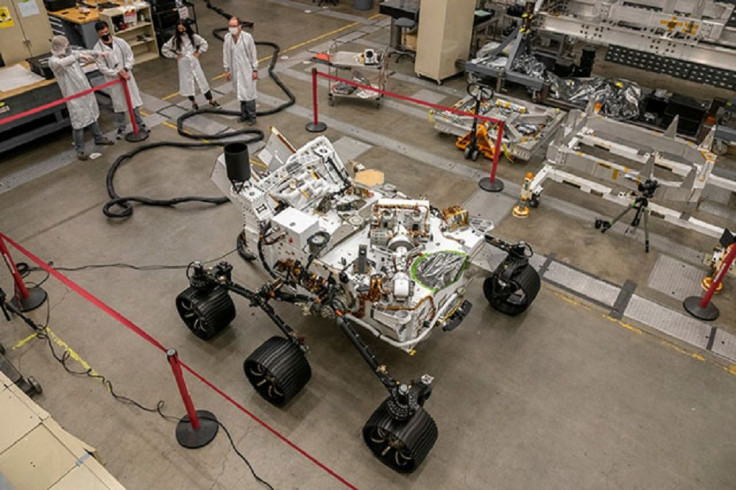Why The Perseverance Rover Needs An Earth Twin
KEY POINTS
- The Mars 2020 Perseverance rover has a twin that is here on Earth
- They are nearly identical but for some Earthly differences
- Testing has already begun on Perseverance's twin, OPTIMISM
- Mars rovers' Earth twins help ensure the success of their missions
While NASA's Mars Perseverance rover is making its way to the Red Planet, its identical twin is already being tested here on Earth.
NASA experts have already begun testing the Perseverance rover's Earth twin. Called Operational Perseverance Twin for Integration of Mechanisms and Instruments Sent to Mars (OPTIMISM), it is nearly identical to Perseverance, with the same size, mobility system and speed. It will also have the unique features of Perseverance, including its cameras, computer and collection system.
Another Mars rover, Curiosity also has a twin called Mars Automated Giant Gizmo for Integrated Engineering (MAGGIE).
But why do these rovers need Earth twins? The rovers here on Earth are not just replicas of the Mars rovers but they are actually an important part of the mission.
"To avoid as many unexpected issues as possible after the rover lands on Feb. 18, 2021, the team needs this Earth-bound vehicle system test bed (VSTB) rover to gauge how hardware and software will perform before they transmit commands up to Perseverance on Mars," NASA said in a statement. "This rover model will be particularly useful for completing a full set of software tests so the team can send up patches while Perseverance is en route to Mars or after it has landed."

Although there are differences between the twin rovers, for instance, OPTIMISM gets its power from a cord that can be plugged in whereas Perseverance uses a radioisotope power system, the Earth rover essentially acts as the test bed that can help ensure the success of Perseverance's mission.
"Missions that are operating require high-fidelity replicas of their systems for testing," VSTB rover test bed team lead Matt Stumbo said in the statement. "The Curiosity mission has learned lessons from MAGGIE that were impossible to learn any other way. Now that we have OPTIMISM, the Perseverance mission is well equipped to learn what they need to succeed on Mars."
On Sept. 1, OPTIMISM already passed its first driving test at a warehouse and it will soon be tested at the "Mars Yard," which is an outdoor area at the JPL facility that replicates the Martian surface.
"Perseverance's mobility team can't wait to finally drive our test rover outside," a mobility test bed engineer at JPL, Anais Zarifian, said. "This is the test robot that comes closest to simulating the actual mission operations Perseverance will experience on Mars - with wheels, eyes, and brains all together - so this rover is going to be especially fun to work with."
While its twin is getting tested, the Perseverance rover is on the way to Mars and is expected to land on Feb. 18, 2021.
© Copyright IBTimes 2024. All rights reserved.






















